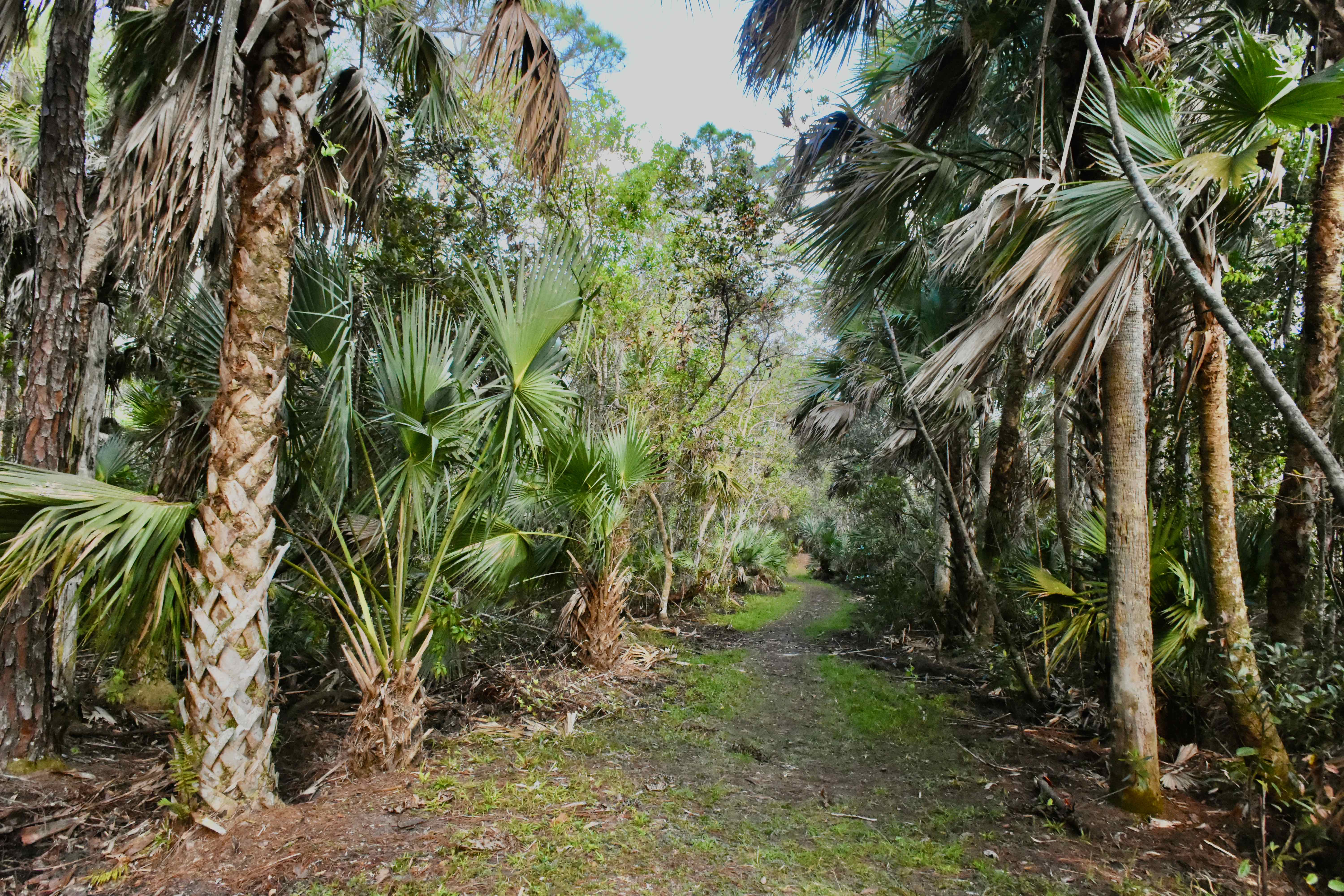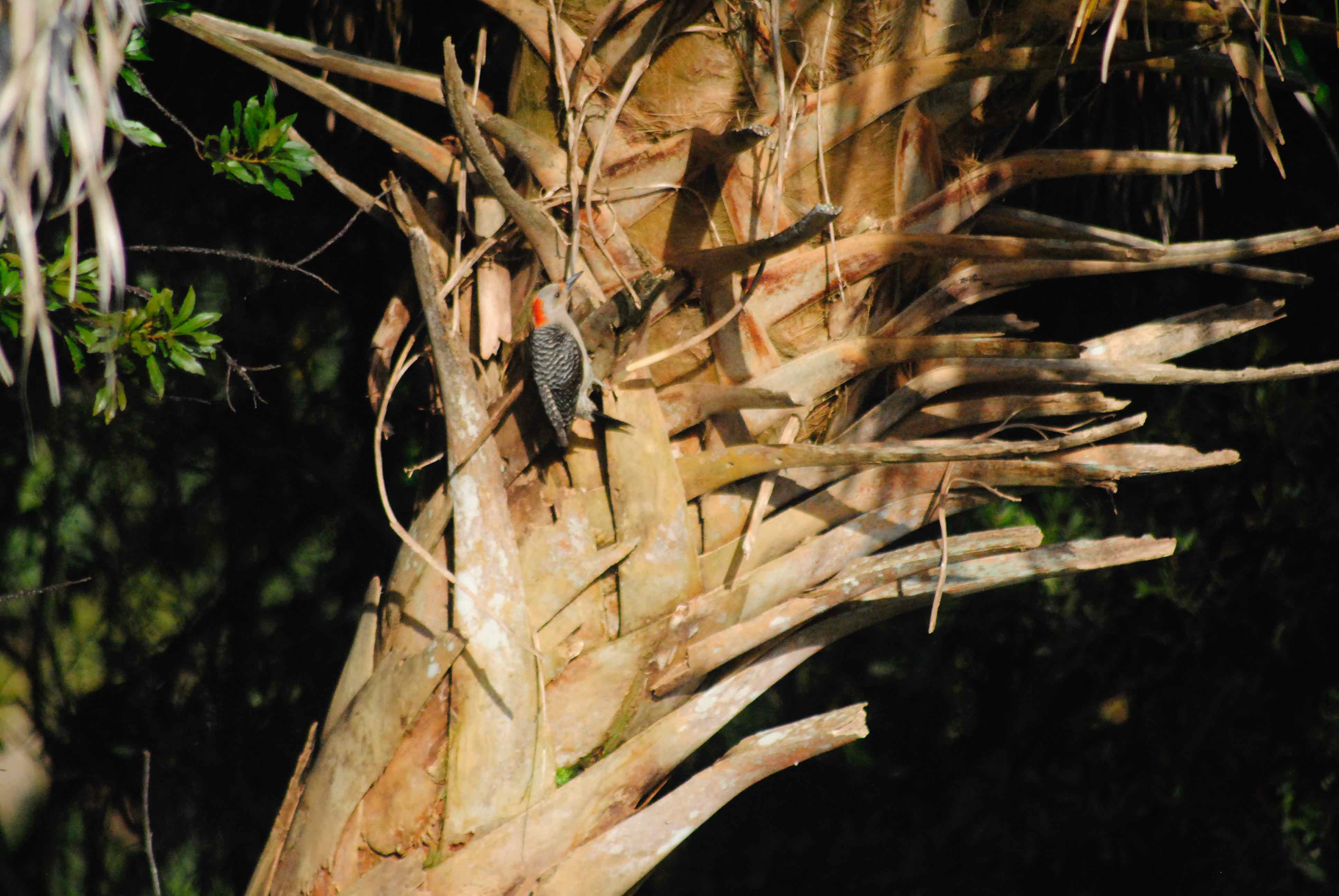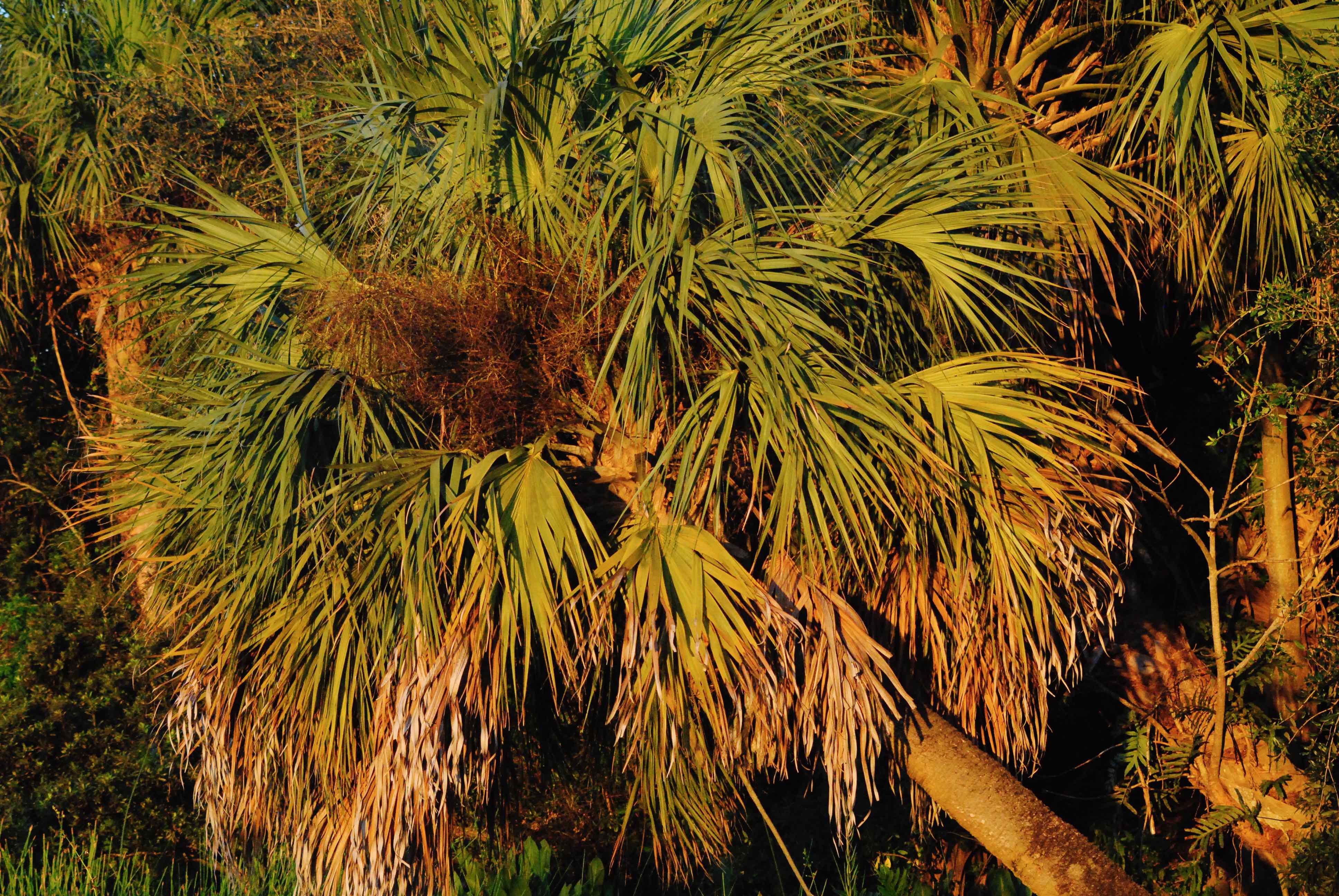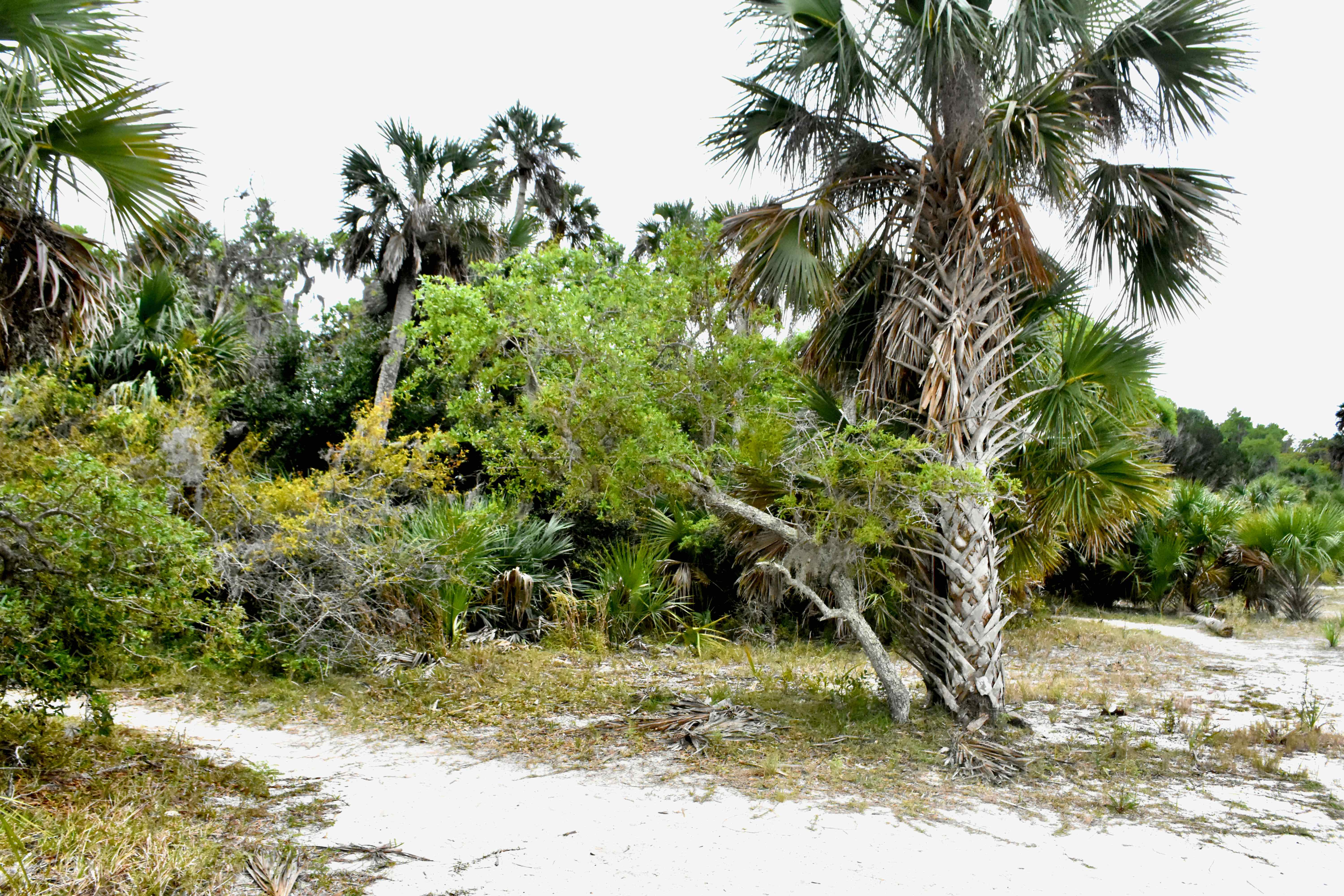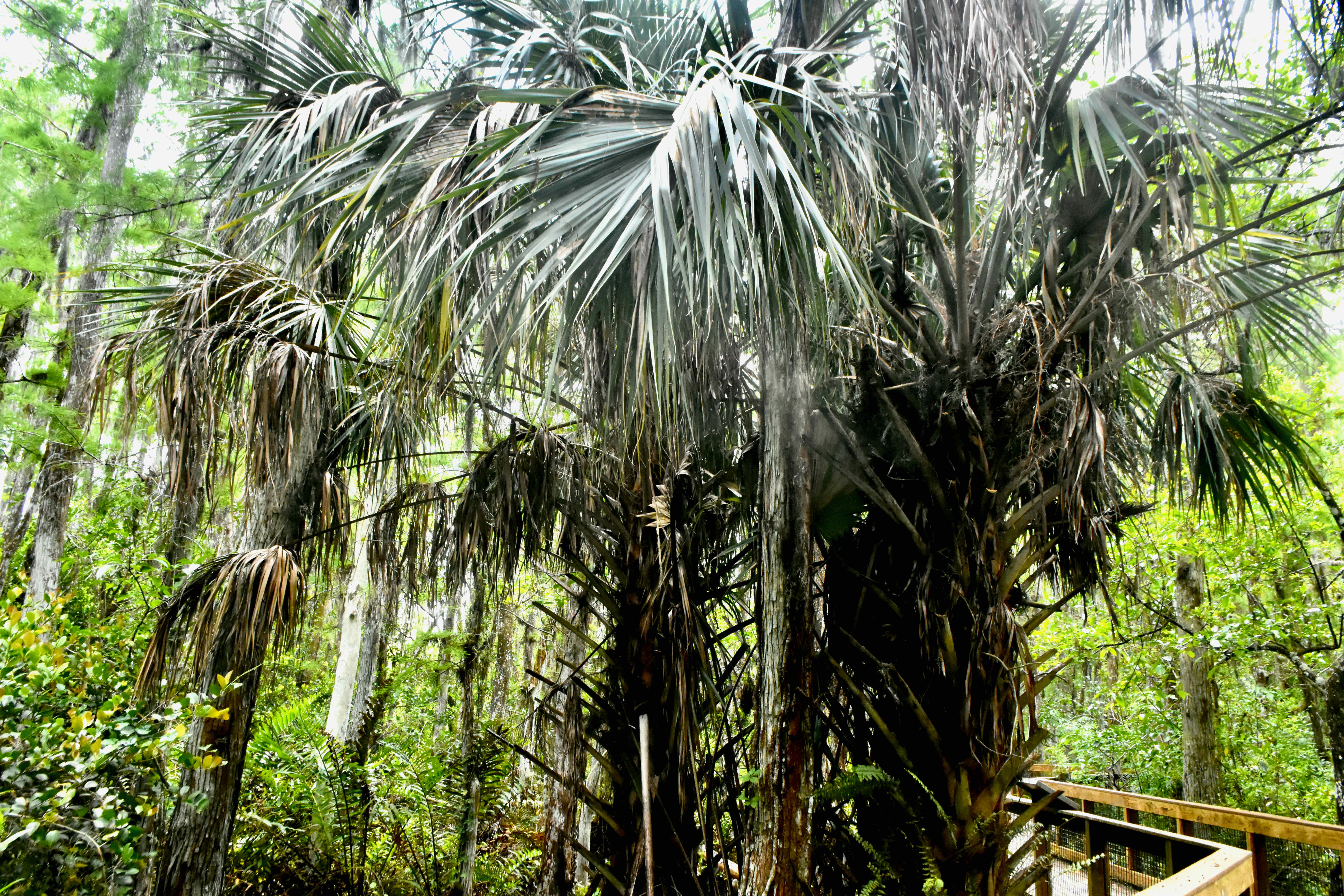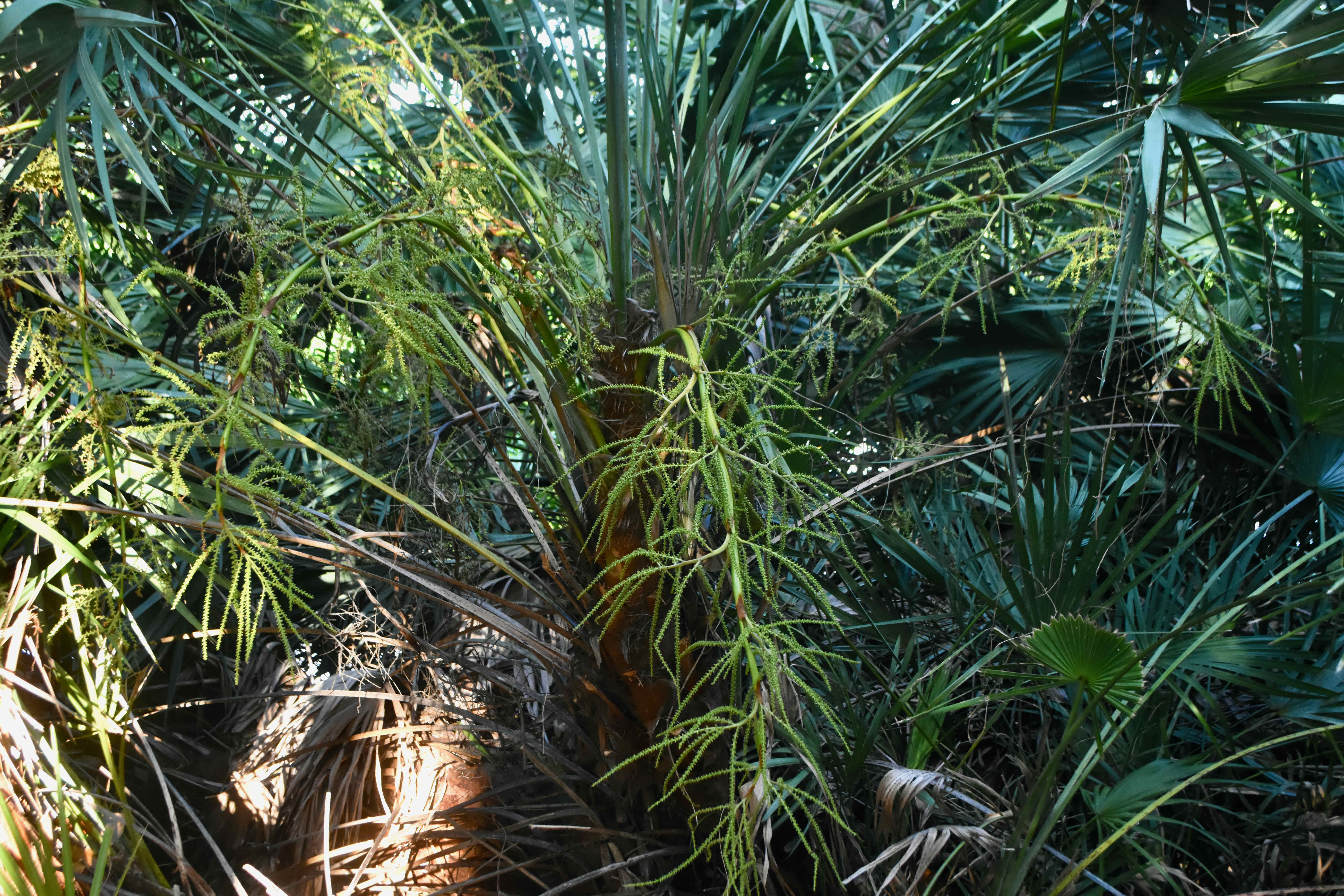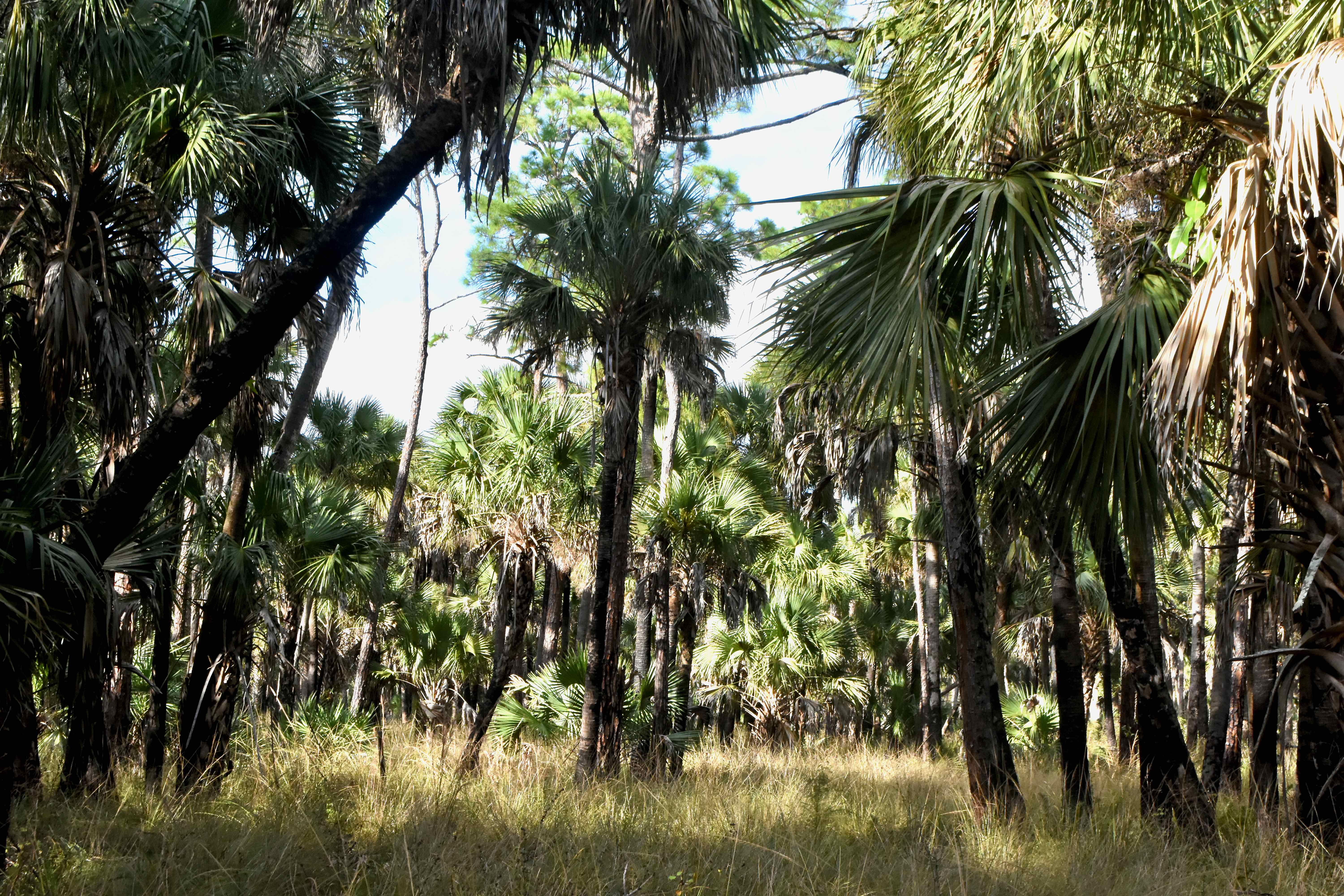
Cabbage palms, photographed at Dupuis Wildlife Management Area, Canal Point, Martin County, in December 2018.
They're everywhere! They're everywhere! Which is one reason why the sabal palm, aka cabbage palm, Sabal palmetto, is Florida's state tree. That, plus its importance culturally and ecologically.
The sabal palm is a member of the Arecaceae family of palms. Some argue that as a palm it should be classified as a grass rather than a tree. We side with tree, however. It's range wraps around the Gulf and Atlantic coasts, from Texas to North Carolina, and usually found within 75 miles of the beach. It's found in just about every Florida county and in just about every Florida habitat, wet and dry. It's also native to Cuba and the Bahamas.
Sabal palms are typically 30 or 40 feet high, but can be much taller. The leaves are compound and fan-shaped, and can be six feet or more in length. The trunk is marked with the bases of old leaves, or what are called boots (they get that name because, as the story goes, once upon a time, people would hang their boots on them to dry out). They put out large, fragrant flower spikes, technically called inflorescences, which attract honey bees. Those flowers, in turn, produce a small, sweet berry that is a favorite food for birds and small mammals, including woodpeckers, mockingbirds, robins and raccoons. Monk skipper butterflies use sabal palms as a host plant for their young. Other butterflies take nectar from the flowers.
Sabal palms can tolerate short-term saltwater flooding, but not long-term. They're fairly tolerant of salt spray.
Young sabal palms resemble their cousins, the saw palmetto, but differ in two ways. One, the petiole, or leaf stem, extends into "fingers" of the frond on the cabbage palm, tapering into a triangle of sorts, where as the petiole on the saw palmetto ends abruptly, squared off, if you will. There's no taper. The fingers radiate from that edge. Two, saw palmettos have sharp "teeth" along the petiole, which sabal palms lack.
Young sabal palms also resemble scrub palmettos; the tell here is more difficult to discern, but the growth point, or heart of palm, on scrub palmettos, also called etonia palms, is below ground, while on the sabal palm it is above ground. Mature sabal palms attain heights that greatly exceed their diminutive cousins, so distinguishing them is not a problem.
The boots can be home for birds, rodents and other animals. They're also convenient places for the seeds of strangler figs to germinate. Ferns also can take root in them. In time, a strangler fig may kill off its host, but even in death sabal palms play an important role in Florida's ecology by providing cover and nesting places for a variety of animals.
They are considered the most wind-resistent tree growing in South Florida, important, obviously, considering the number of tropical storms and hurricanes that batter the region. They're also insect and disease resistent, making them a popular choice for landscaping, either as an accent tree or as a barrier.
Seminoles used sabal palms in constructing their homes. The logs were used to construct the frames, while the leaves became thatch for the roofs. The logs also would be split into planks, which would be used to make the floor. The used the fiber from the tree to make cords, which they would use to hold everything together. Seminoles used the berries and seeds as a treatment for headaches and fever, and also for food. Parts of the leaves became arrows, staff and sticks for games. They made a variety of utensils as well, including food paddles and drying frames. They even made a fish poison from sabal palms. The Choctaw and Houma similarly used the tree.
The reason why sabal palm is also known as the cabbage palm is because of its edible terminal leaf bud, also known as heart of palm, which some say has a cabbage taste to it and was used to make a dish called swamp cabbage. However, harvesting the bud kills the tree. Eat the Weeds says the taste raw is more like artichokes; cooked, like asparagus. The site also says Native Americans didn't eat the buds until Europeans introduced metal axes.
Photo Gallery — Click on photo for larger image
Links for Cabbage Palm / Sabal Palm

